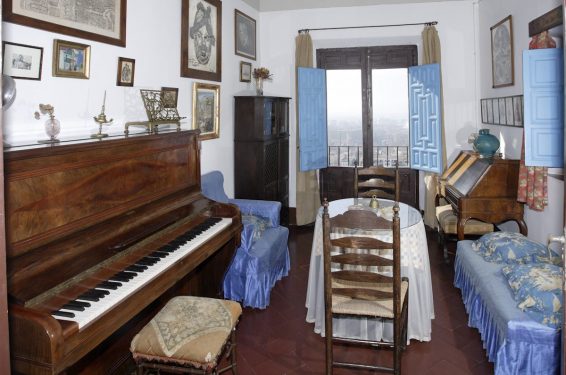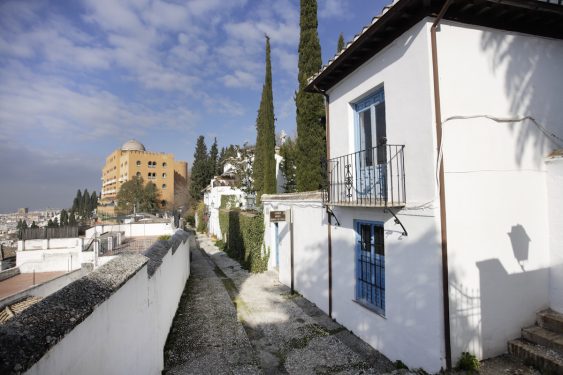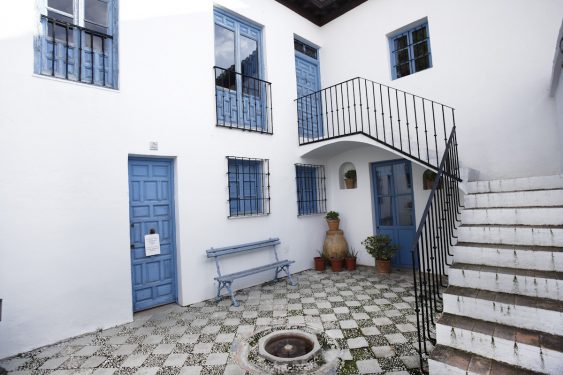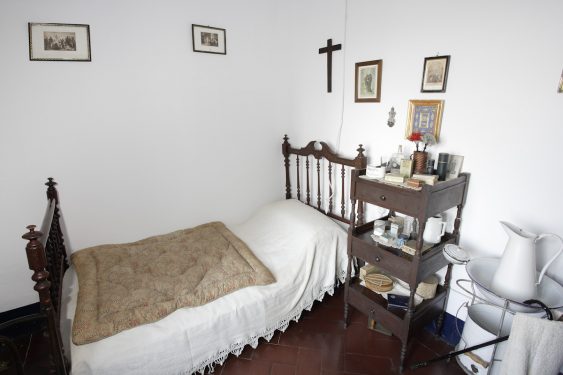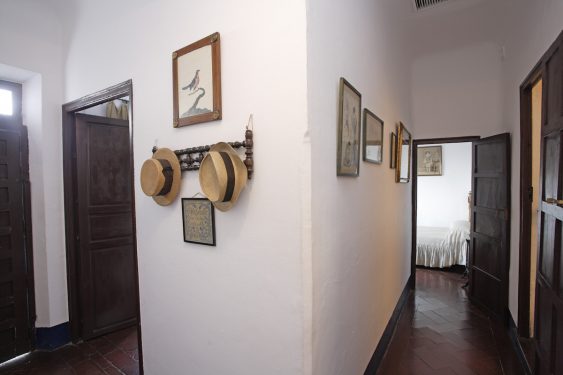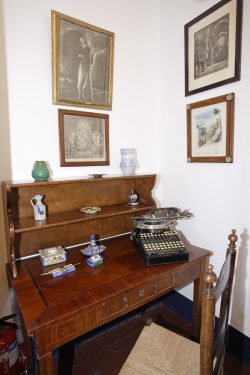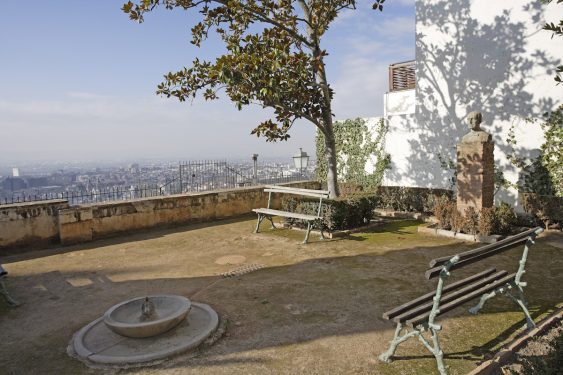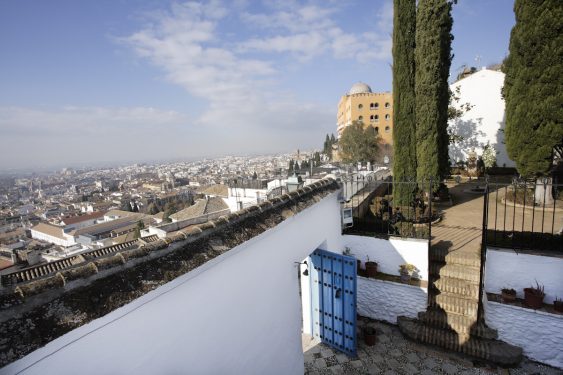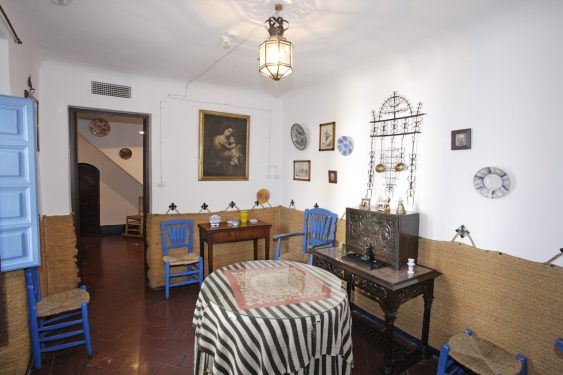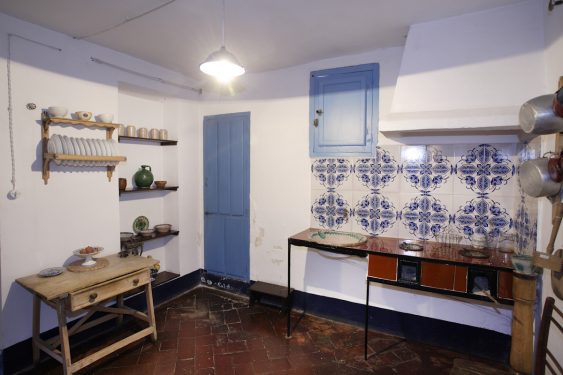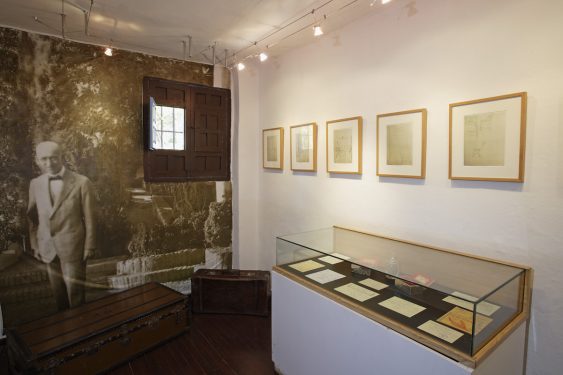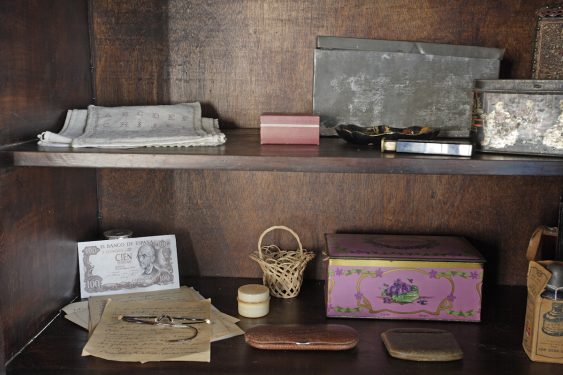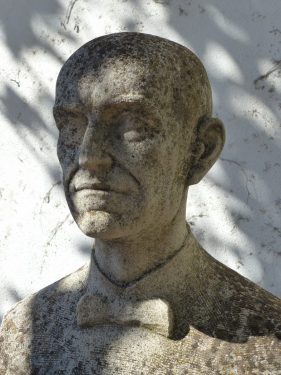Residence of the composer Manuel de Falla between 1922 and 1939 and a frequent visit of Lorca. It was converted into a museum in 1962.
Manuel de Falla´s House in Antequeruela street (Carmen de la Antequeruela), in the grounds of the Alhambra, the modest house chosen by Manuel de Falla to live in Granada after several attempts that failed to find a stable apartment, became one of the secret centers of European cultural life in the 1920s and 30s and the place of attraction for the group of lively young people from Granada linked to El Rinconcillo and later the Athenaeum.
The adaptation of the house as a museum tried to preserve the atmosphere in which the musician lived with an unprecedented meticulousness, respecting even the humidity and the disorder of the drawers: it had to give the visitor the impression that the master had left and would return in a while.
The composer resided almost permanently in it between 1922 and 1939. In 1962, it was converted into House-Museum following descriptions and drawings made by Hermenegildo Lanz shortly after the musician’s departure to Argentina. Lanz made the drawings in the hope that when Falla returned from Buenos Aires (he died in 1946) he would recover the domestic tranquility of his house as he had left it.
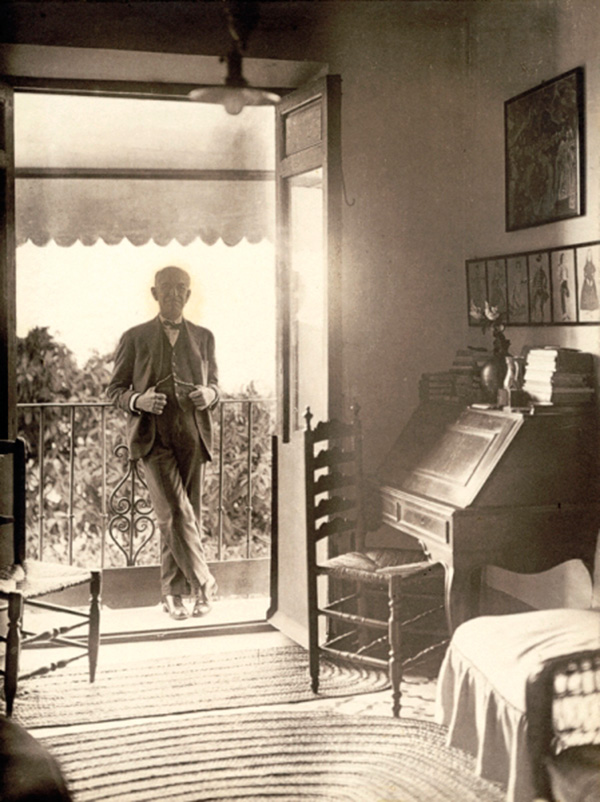
The adaptation of the house as a museum tried to maintain the atmosphere in which the musician lived with an unprecedented meticulousness, respecting even the humidities and the rosettes on the walls or the disorder of the drawers where Falla accumulated his medicines. Falla’s biographer, Manuel Orozco, faithful to this peculiar hyperrealism, said that the house should give the visitor the impression that the maestro had gone out and would be back in a while.
In the Manuel de Falla´s House in Antequeruela street pieces were composed such as Master Peter’s Puppet Show(1922), Psyche (1925), the tributes to Arbós and Dukas (1933 and 1935) or the Concerto for harpsichord (1925), of a boldness that so many years later still surprises spectators. And of course Atlantida, that long unfinished attempt that occupied the last decades of the composer’s life in Spain and Argentina.
Since Falla and his sister María del Carmen moved from Calle Real de la Alhambra to Antequeruela, in 1922, the house was a preferred meeting place with Federico García Lorca, his brother Francisco and some selected members of the El Rinconcillo gathering, where the maestro once went.
Lorca was one of the regular visitors. He played his piano on numerous occasions and there he devised the puppet show with Falla on Three Kings Day 1923 at the Lorca family home at Acera del Casino, 31.
There, the 1923 Flamenco Song Contest was also devised and Lorca, by Falla’s hand, got to know the “primitive Andalusian singing” that inspired the Poem of the Deep Song, written in 1921 in parallel to the organization of the contest, but which was not published until 1931. On February 12, 1922 Lorca read for the first time his lecture on The Deep Song. A primitive Andalusian song at the Centro Artístico.
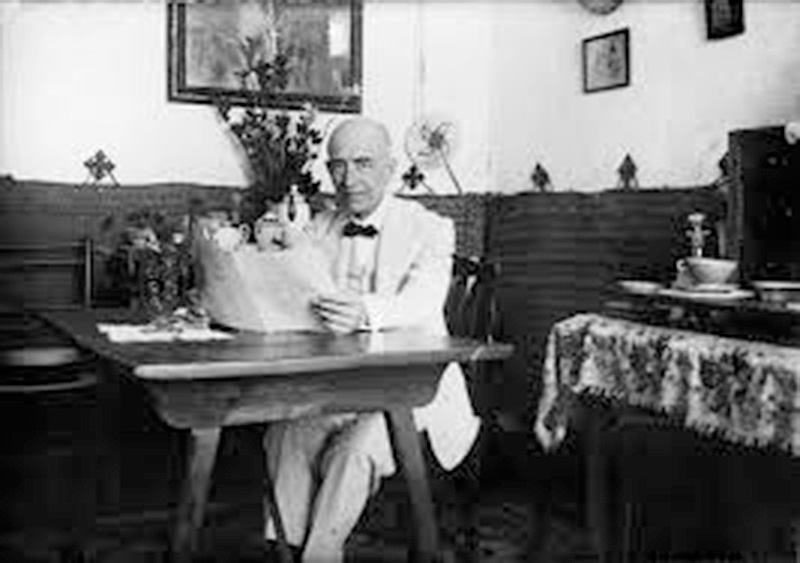
Falla’s appearance in Granada around 1920 aroused a general enthusiasm in cultural circles and a very particular one in Federico who, aware of the presence of the maestro in the Calle Real in the Alhambra, went in the company of Ángel Barrios and told him: “We want to be your friends”. The visits were already continuous.
Isabel García Lorca recalls that the first time Federico spoke to them about Falla was at the house in Acera del Darro. “He told us that they were still in Granada a little lost and alone. So we went there, [to Falla’s first house in Granada] my mother, Concha, Federico and me. The house was sad and gloomy, but its inhabitants seemed to us quite the opposite, they looked happy.”
On New Year’s Eve 1921, Lorca prepared a surprise for Falla to welcome the new year. The writer recruited a group of musicians from the municipal band of Granada and planted himself at the door of the house. In a letter to the musicologist Adolfo Salazar written on January 1, 1922, Federico himself reconstructs that unusual serenade: “I played the Song of the Will o’ the Wisp for trombone, clarinet, tuba and cornet. I assure you that it was a devilish thing…. and wonderful! Four musicians from the municipal band were in charge of playing it, and we gave a delightful surprise to Manolo and María del Carmen. It made them laugh so much that they couldn’t get up to open the door for us, but now comes the funny part. Falla said that that instrumentation was great and that not even the great Don Igor [Stravinski] even dreamed of it, and, giving great voices, he put the poor musicians in the room and made them repeat four times the funny din accompanying them at the piano!”
The ritual of the Lorca’s visits to the house was as strict as it was sober. Francisco García Lorca remembers those Sunday gatherings in which, after serving tea, María del Carmen Falla, the musician from Cadiz, who was “always frugal”, would sit wordlessly in front of the piano and improvise. “Above the instrument Picasso’s figurines were framed in a black jonquil for The Three-Cornered Hat“.
One of the few misunderstandings between Lorca and Falla was a result of the publication in the Revista de Occidente in 1928 of the first part of the Ode to the Blessed Sacrament of the Altar, which was to form part of an unfinished book of odes and which he dedicated to the musician from Cadiz. In February 1929, Falla wrote him a letter in which he expressed his unease: “To you, who know me so well, I do not need to tell you what differences separate us on the subject of your Ode. If I were to deal with it, I would do so with my spirit on its knees, and aspiring for all humanity to be divinized by the virtue of the Sacrament […]”.
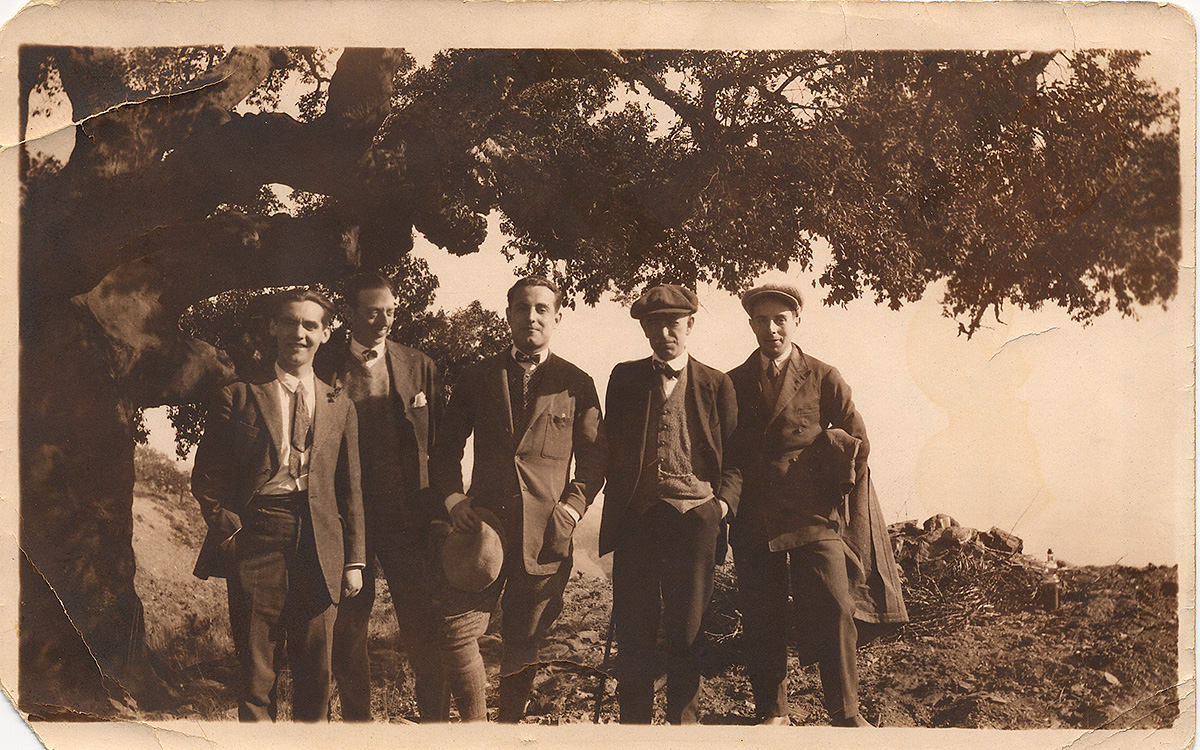
Hermenegildo Lanz wrote a detailed chronicle dedicated to his children of Falla’s last day at the house before leaving for Barcelona, in September 1939, on his way to Argentina. In addition to Lanz, the farewell – which Falla knew to be final – was witnessed by his sister María del Carmen, who went with him; his brother Germán Falla and his wife, and their daughter Maribel Falla, and several neighboring friends: “Farewell until Eternity, perhaps at the bottom of the sea,” said Falla.
Master Peter’s Puppet Show by Falla premiered in 1927 at the Olimpia Coliseum on Gran Vía, a now-defunct theater currently occupied by the so-called Olimpia Building. The theater momentarily abandoned its role as a fashionable cinema dedicated to the projection of silent films and hosted the city premiere of the work inspired by Don Quixote.
Falla, according to García Lorca: “Falla is a saint… A mystic… I venerate no one like Falla… There in his house in Granada, he works constantly with a thirst for perfection that admires and terrifies at the same time. Disdainful of money and glory… With the only desire to be better every day and to leave a finished work. Another, with what he has done, he would rest… Maestro Falla would not. (…). Because for Falla it is not this life that counts, but the next. His faith is of such magnitude that he rejects the miracle and protests against it”.
(Interviews with Pablo Suero dated 1933 and published in Noticias gráficas de Buenos Aires, October 11 and 15, 1933).
“Y vuelve el maestro a su celda. [And the master returns to his cell], / Y vuelve el maestro a su celda. [He puts his watch back two hours and so the laborious morning is infinite], / la tarde sesteante y charladora [and the afternoon is snoozing and chatting], / y la noche de errantes estrellas [and the night of wandering stars] / no tiene nunca prisa [he is never in a hurry], / La música tampoco [Nor is the music], / Lejanos grillos cantan, cantan [Distant crickets sing, sing], / Y Manuel de Falla crea en sueños [And Manuel de Falla creates in dreams]”.
(Gerardo Diego)“Only in silence and peace, only an artist in this little house, can have the illusion that he lives in the same time as in another, the same today, in the twentieth century, as in the twelfth”.
(Azorín)“He went to Granada for silence and time, and Granada gave him harmony and eternity”.
(Juan Ramón Jiménez)- Ian Gibson. Federico García Lorca. Biography. Grijalbo. Barcelona, 1988.
- Isabel García Lorca. My Memories. Tusquets. Barcelona, 2002.
- Francisco García Lorca. Federico and his World. Alianza Tres, Madrid, 1990.
- Federico García Lorca. Complete works, IV. RBA-Instituto Cervantes. Barcelona, 2006.
- Andrés Soria Olmedo. Thirty-One Interviews with Federico García Lorca. Entornográfico Publishing Houses. Granada, 2017.
- Lorca´s location
- Manuel de Falla house in Antequeruela
- current location
- Manuel de Falla House-Museum
- ADDRESS
- Antequeruela Alta, 11
- Web
- http://www.manueldefalla.org/casamuseo.php
- Telephone
- 958 222 188
- casamuseomanueldefalla@granada.org
- DETAILS OF THE VISIT
Please, check the museum website for information on opening hours.
